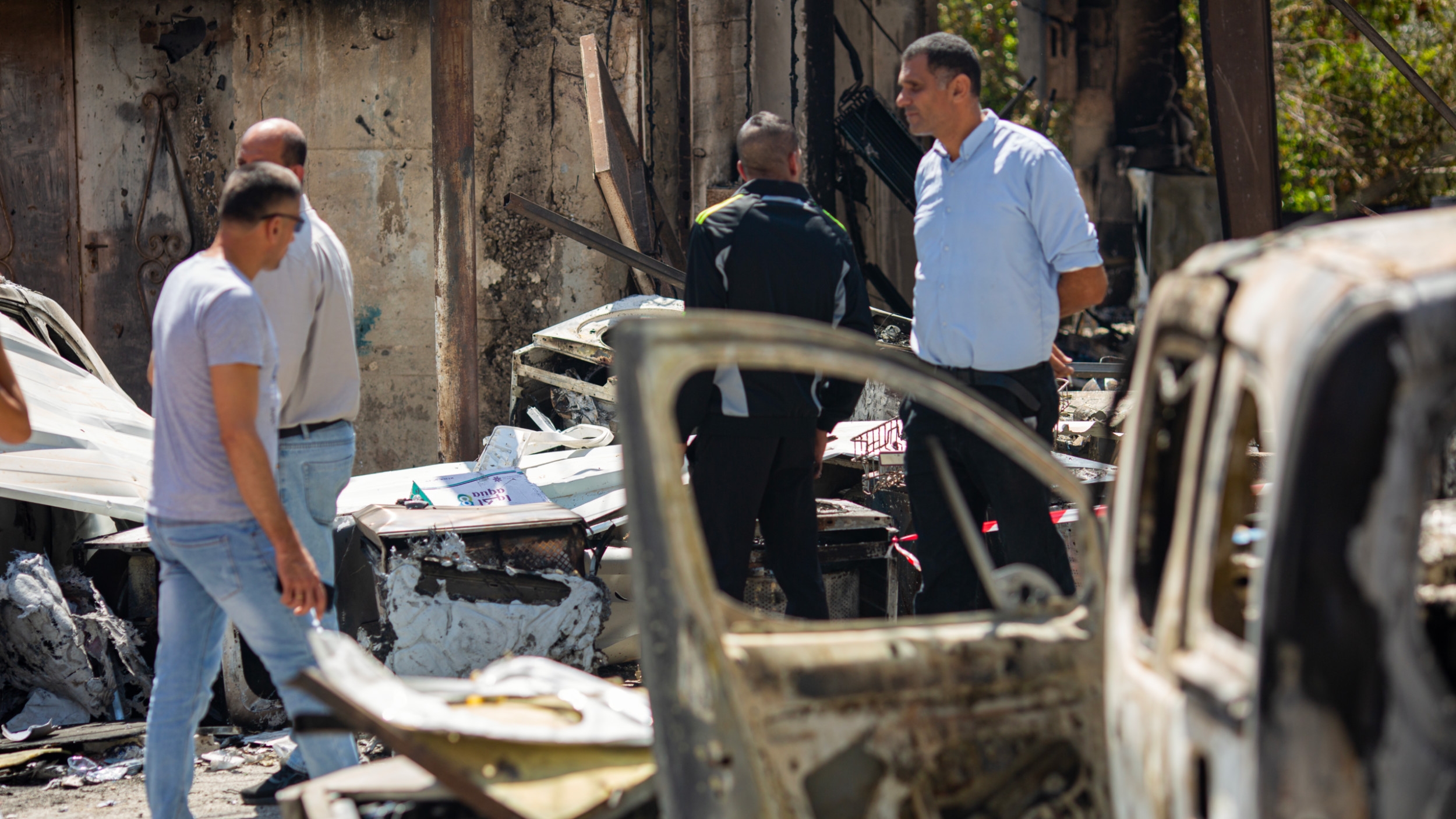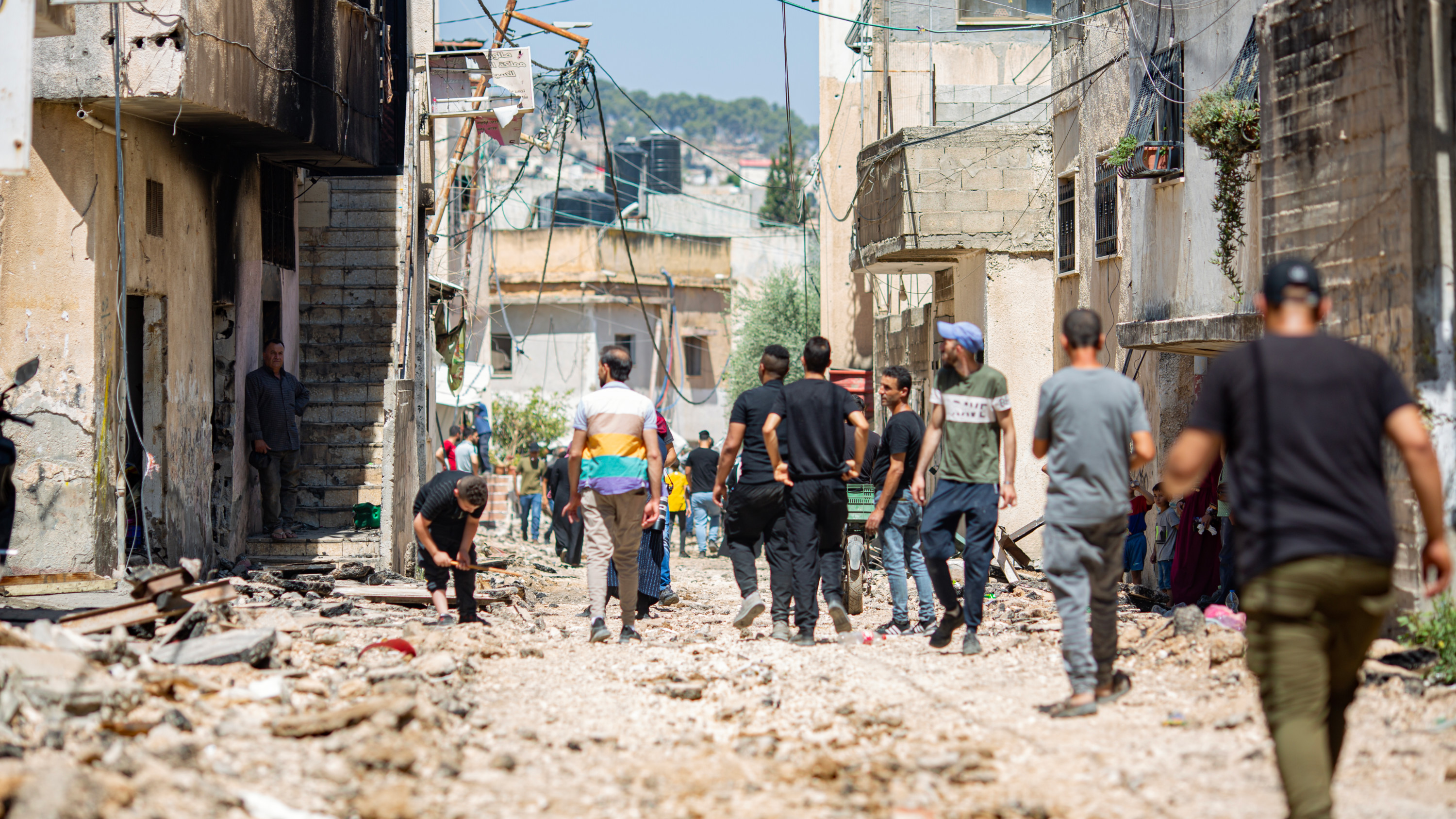Jenin buries its dead and inspects destruction left by Israel's aggression

Palestinian residents of Jenin woke up to scenes of widespread destruction in the occupied West Bank city, after Israeli troops ended their 48-hour aerial and ground aggression.
After thousands of people who were forcibly displaced during the fighting returned to inspect the damage, crowds joined the funeral processions of the boys and young men killed by the Israeli army since Monday.
The Palestinian health ministry said 12 people, including five children, were killed in two days - some from gunshot wounds and others as a result of air strikes. At least 120 others were wounded, 20 of them in a critical condition.
Those killed were identified as Moustafa Emad Qaseim, 16, Nour Eddin Husam Marshoud, 16, Majdi Ararawi, 17, Ali Hani al-Ghoul, 17, Abdel-Rahman Saabana, 17, Husam Mohammad Abu Deibeh, 18, Aws Hani Hanoun, 19, Sameeh Firas Abu al-Wafa, 20, Jawad Neirat, 20, Ahmad Mohammad Amer, 21, Odai Ibrahim Khamaiseh, 22, and Mohammad Muhannad al-Shami, 23.
The Israeli army said one soldier was killed in the assault.
At the funerals, defiant crowds chanted support for armed resistance groups in the camp, who fought fierce street battles with Israeli soldiers for two days.
The Jenin Brigades and the Izz al-Din al-Qassam Brigades, the armed branch of Hamas, released statements saying the Israeli army had failed to achieve any meaningful goals of the operation and was stopped from advancing deep into the camp.
Some fighters from the various armed groups operating in Jenin emerged at the processions and burials, paying their respects to the dead.
The alleyways of the camp, which was under siege for two days, bore the scars of widespread devastation of homes and basic public services.
Columns of smoke have been visible over the camp since Monday.
Piles of rubble were left mounted around the edges of the roads after the bulldozers had finished, in addition to the destruction of the camp's infrastructure, with water and electricity networks ruined.
On Tuesday the municipality of Jenin announced in a brief statement that Israeli military vehicles destroyed the main water lines in the camp and its surroundings.
Israeli soldiers prevented the municipality crews from working in the affected places or even reaching them to assess the damage.
The destruction was not limited to streets, water and electricity networks, but extended to homes, residential buildings and even hospitals and mosques.
Tawalbeh Mosque in the centre of the camp was severely damaged by the bombardment. Its windows were shattered and its doors damaged, amid threats to bomb it from warplanes.
As the operation wound down, Israeli Prime Minister Benjamin Netanyahu declared that such operations would not be a "one-time action".
Meanwhile, Vanessa Huguenin, a spokesperson for the UN humanitarian office, said: “We are alarmed at the scale of air and ground operations that are taking place in Jenin in the occupied West Bank, and air strikes hitting a densely populated refugee camp.”
As Israeli troops left Jenin on Tuesday night, bringing to an end one of their largest operations in the West Bank in two decades, several rockets were fired from Gaza, with Israel bombing several sites in the territory.
No injuries were reported on either side.
Middle East Eye propose une couverture et une analyse indépendantes et incomparables du Moyen-Orient, de l’Afrique du Nord et d’autres régions du monde. Pour en savoir plus sur la reprise de ce contenu et les frais qui s’appliquent, veuillez remplir ce formulaire [en anglais]. Pour en savoir plus sur MEE, cliquez ici [en anglais].





